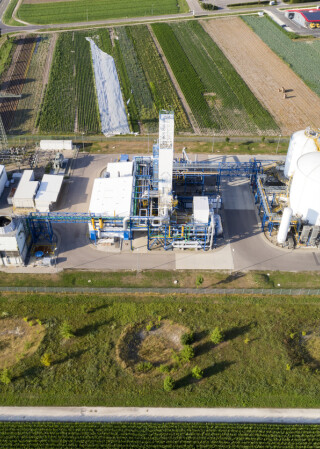Hunter Development Brokerage Pty Ltd trading as HDB Town Planning and Design (“Applicant”) commenced proceedings in Class 1 of the Land and Environment Court’s jurisdiction appealing against Singleton Council’s deemed refusal of a modification application seeking to permit biomass to be utilised as a fuel source in an existing electricity generating works known as the Redbank Power Plant (“the modification application”).
The power plant is the subject of a development consent granted by the Court in 1994 in the course of an objector’s appeal against the Council’s grant of conditional development consent in respect of the plant, which was classified as designated development at that time (see Greenpeace Australia Ltd v Redbank Power Company Pty Ltd (1994) 86 LGERA 143).
The conditions of consent imposed by the Court included requirements for the development to be carried out “generally in accordance” with the environmental impact statement submitted with the development application, and for “at least the majority” of fuel burnt at the plant in any one year after commercial operation to be coal washery tailings from the washeries or storage dams of two particular nearby mines.
Prior to the plant being constructed, the development consent was modified by the Court in 1997 to, among other things, limit the source of tailings to one particular mine and to facilitate the use of beneficiated dewatered tailings instead of tailings in a slurry form.
The plant was ultimately constructed on the basis of the development consent as modified, and supplied electricity to the grid between October 2001 and October 2014. The plant has been in care and maintenance since this time.
The biomass sought to be used in the plant comprised biomass from “forestry and sawmilling residues” or “uncontaminated wood waste” classified in accordance with the NSW Environment Protection Authority’s Eligible Waste Fuels Guidelines and was proposed to be sourced generally within a 300km radius of the plant.
The Council had contended that the modification application warranted refusal for a number of reasons. The primary contention was that the Court could not be satisfied that the development to which the consent as modified relates is “substantially the same” development as the development for which the consent was originally granted and before that consent as originally granted was modified as required by section 4.56(1)(a) of the Environmental Planning and Assessment Act 1979.
The Applicant had submitted that the modified development would remain “substantially the same” because its essence as an electricity generating works and fundamental processes would remain largely unchanged, with only minor physical works required to the existing plant infrastructure. It was also argued that the terms of the modification application permitted the continuing use of coal tailings at the plant and so did not fundamentally alter that characteristic of the original development, although it was acknowledged that tailings were not commercially available to the plant at the present time.
The Council had submitted that the essential characteristic of the plant the subject of the development consent was the burning of coal tailings obtained from nearby mine operations. The modified development would alter this essential characteristic in an impermissible way as the operator would be afforded an inherent discretion as to whether to burn coal tailings or biomass, as well as alter the environmental impacts of the development and involve not insignificant physical works to the plant.
The judgment of Justice Duggan was handed down on 3 June 2022. Her Honour concluded that development the subject of the development consent had two co-dependent and interrelated purposes, being the disposal of coal tailings from nearby mines and the consequential generation of electricity from the process of the disposal of coal tailings. It was therefore found that the discretion proposed to be afforded to the operator that would permit the abandonment of the use of coal tailings at any time would alter the development in such a fundamental manner that it would lose the “essential and material relationship to the disposal of coal tailings and the associated mine operations that it cannot be characterised as being substantially the same development” (at paragraph [100]).
The appeal was accordingly dismissed by Justice Duggan.
It is interesting to note that in circumstances where the development consent was not accompanied by any approved plans that would enable a quick comparison to ascertain the differences between the two proposals, the Court had reference to the broad statements in the environmental impact statement to identify the essential characteristics and conceptual boundaries of the development that was originally approved.
A copy of the judgment of Justice Duggan can be viewed here.
Adam Seton and Alicia Foley of Marsdens Law Group acted on behalf of the Council in the appeal.
For further information on this planning and environmental law update, please contact Adam Seton on aseton@marsdens.net.au or (02) 4626.
The contents of this publication are for reference purposes only. This publication does not constitute legal advice and should not be relied upon as legal advice. Specific legal advice should always be sought separately before taking any action based on this publication.


